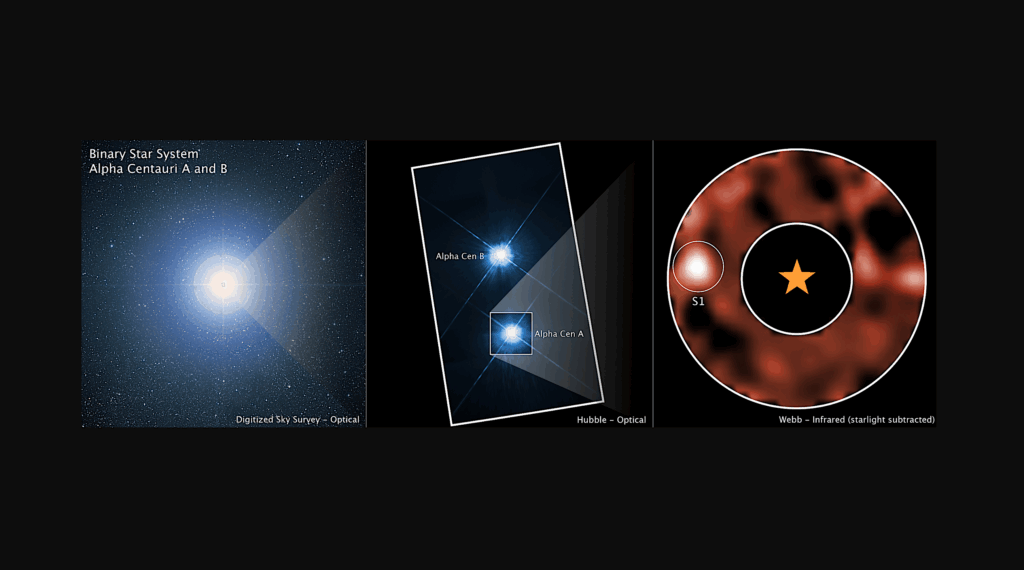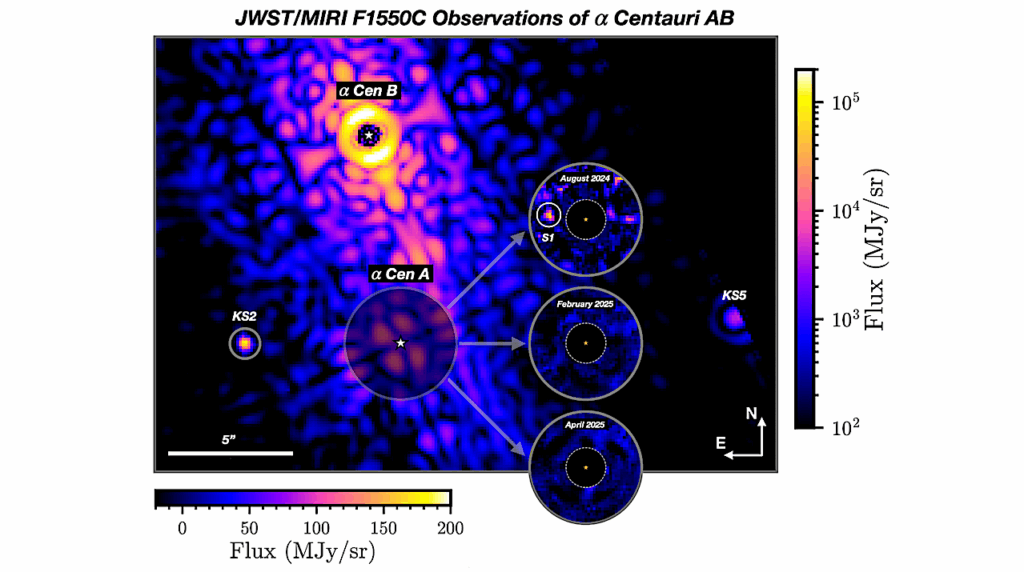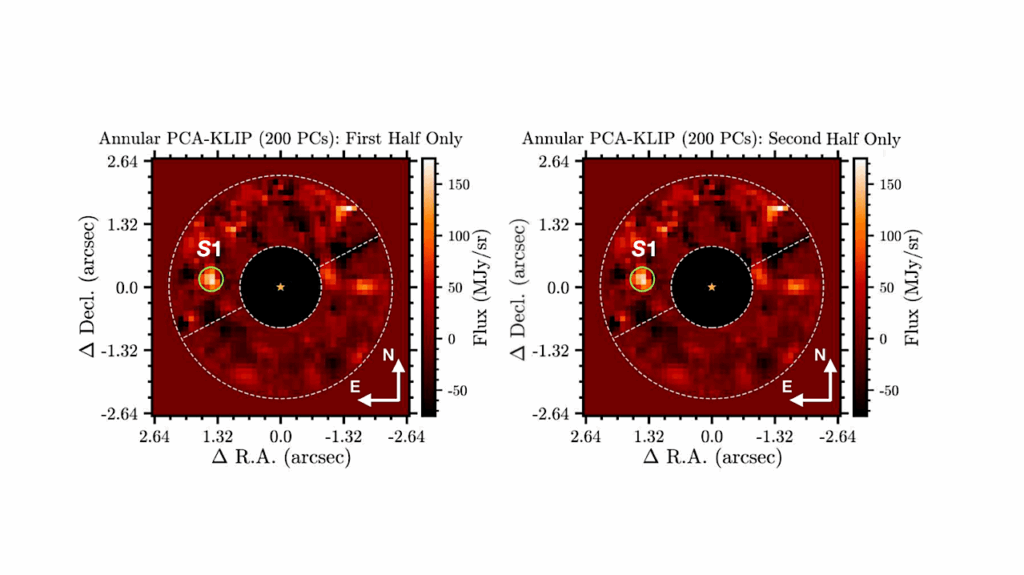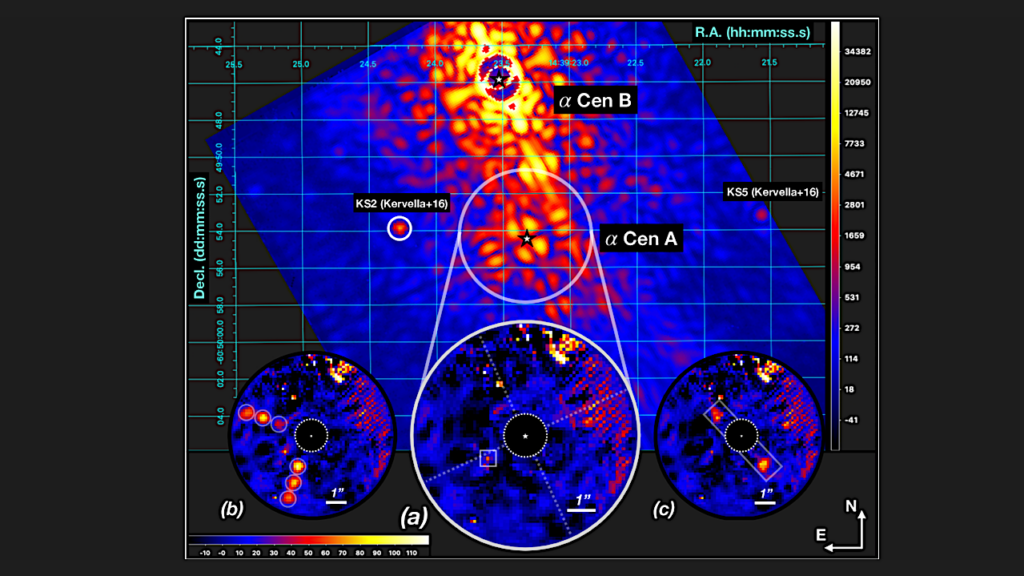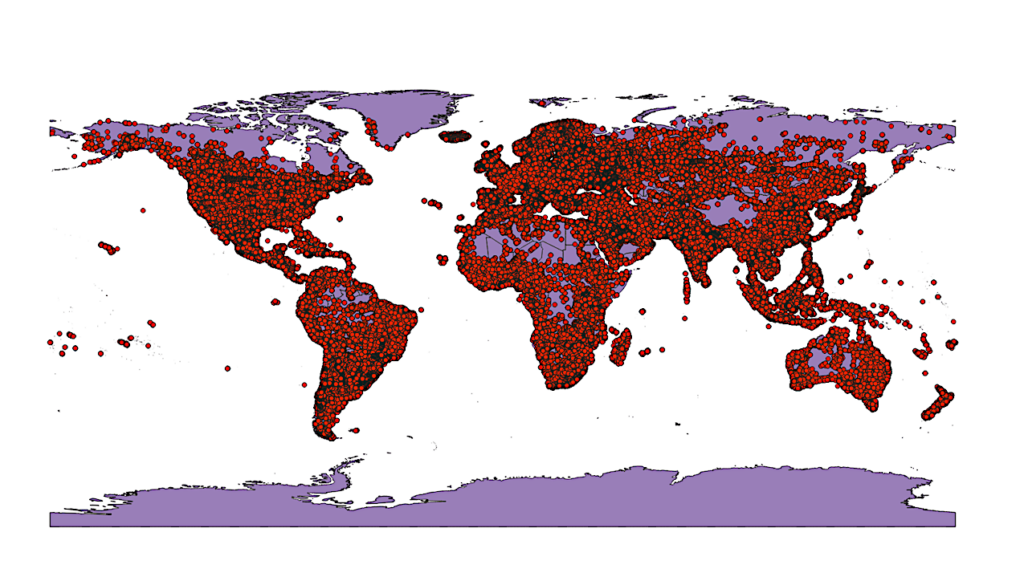A Case Study of Interstellar Material Delivery: Alpha Centauri
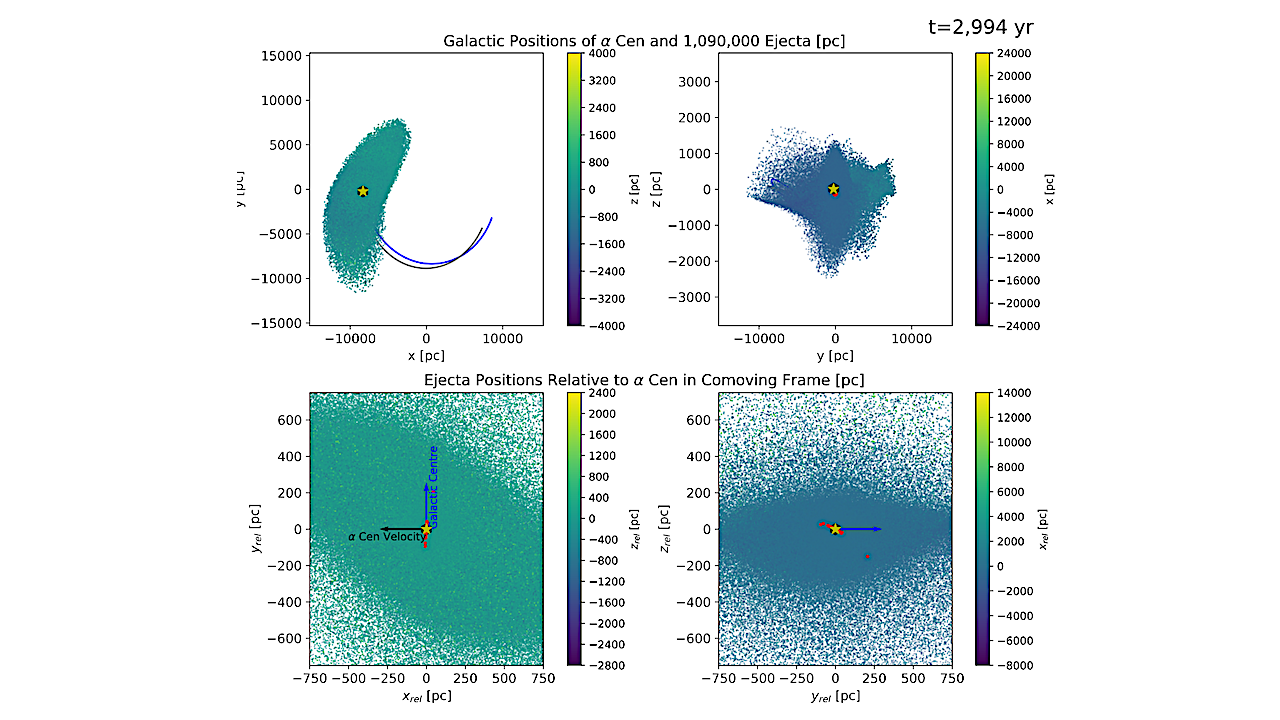
Interstellar material has been discovered in our Solar System, yet its origins and details of its transport are unknown. Here we present α Centauri as a case study of the delivery of interstellar material to our Solar System.
α Centauri is a mature triple star system that likely harbours planets and is moving towards us with the point of closest approach approximately 28,000 years in the future. Assuming a current ejection model for the system, we find that such material can reach our Solar System and may currently be present here. The material that does reach us is mostly a product of low (<2 km/s) ejection velocities, and the rate at which it enters our Solar System is expected to peak around the time of α Centauri ‘s closest approach.
If α Centauri ejects material at a rate comparable to our own Solar System, we estimate the current number of α Centauri particles larger than 100 m in diameter within our Oort Cloud to be 106, and during α Centauri ‘s closest approach, this will increase by an order of magnitude. However, the observable fraction of such objects remains low as there is only a probability of 10−6 that one of them is within 10 au of the Sun.
A small number (∼10) meteors greater than 100 micrometers from α Centauri may currently be entering Earth’s atmosphere every year: this number is very sensitive to the assumed ejected mass distribution, but the flux is expected to increase as α Centauri approaches.
Cole R. Gregg, Paul A. Wiegert
Comments: Accepted for publication in PSJ (Jan 31, 2025). 15 pages, 2 tables, 9 figures (3 animations – https://www.youtube.com/playlist?list=PL8bn7jytqoQZkbnryQRmKWargaY0uKyrX )
Subjects: Earth and Planetary Astrophysics (astro-ph.EP); Astrophysics of Galaxies (astro-ph.GA); Solar and Stellar Astrophysics (astro-ph.SR)
Cite as: arXiv:2502.03224 [astro-ph.EP] (or arXiv:2502.03224v1 [astro-ph.EP] for this version)
https://doi.org/10.48550/arXiv.2502.03224
Focus to learn more
Submission history
From: Cole Gregg
[v1] Wed, 5 Feb 2025 14:41:44 UTC (29,939 KB)
https://arxiv.org/abs/2502.03224
Astrobiology,


